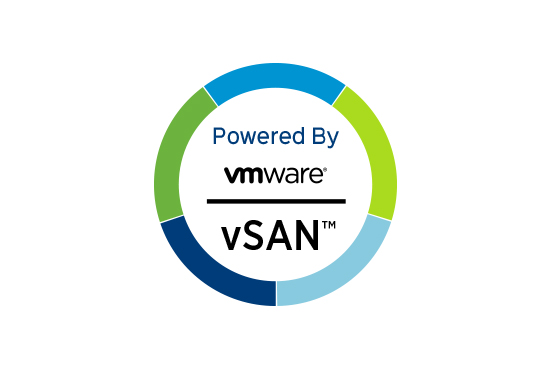-
What is VMware vSAN?
-
Configure a vSAN cluster with Quickstart
-
Conclusion
Storage virtualization groups physical storage from serval storage devices into a single virtual storage device. Storage virtualization enables smooth and quick data migration with reduced downtime, better workflow with a central console, less hardware needed, and better access to the data.
One of the most well-liked storage virtualization technologies on the market today, VMware's vSAN, provides administrators with an easy and reliable way to virtualize storage in vCenter setups, eliminating storage cost and complexity. To help you understand VMware vSAN better, I’ll dive deeper into the storage management tool, what can we do with it, and how to configure it.
What is VMware vSAN?
VMware vSphere vSAN is an enterprise storage solution built in the ESXi hypervisor that creates a shared datastore for virtual machines. It supports hyper-converged infrastructure (HCI) systems and all-flash configurations.
The software-defined tool abstracts the local physical storage of the ESXi hosts and makes a pool out of it to partition and distribute those resources to virtual machines and applications in the vSphere cluster. The most recent version is vSAN 8.0 in 2022.

It has two modes available: one is an economical hybrid mode using SSD devices as cache and cheaper HDDs for persistent storage, and another is the all-flash mode that uses SSD disks for cashing and persistence tier with better performance but increased costs.
Because of its agility, simplicity, and integration with vSphere, vSAN is often used to run and maintain various workloads like business-critical apps or virtual desktop infrastructure, deploy remote and branch offices, or even simplify disaster recovery site management.
Requirements for vSAN 8.0
Hardware:
At least four NVMe TLC devices for vSAN Express Storage Architecture;
Minimum NICs with 25Gbps network;
One SAS, or SATA, or PCIe SSD;
Flash Read Cache cannot use SSDs, while the latter cannot be formatted;
SAS, SATA HBA, or RAID controller that is configured in the RAID 0 or pass-through mode
SSDs and a maximum of 24 drives per node;
At least 32 GB of memory in the cluster;
At least 512 GB host memory for vSAN Express Storage Architecture;
Hosts in the cluster connect to a vSAN Layer 2 or Layer 3 network;
Cluster:
At least 3 capacity-contributing hosts;
2 nodes architecture needs a Witness host;
The host cannot participate in others when residing in the vSAN cluster;
Software:
ESXi 7.0 Update 1 or later for full vSAN capabilities.
Features
Storage policy-based management: allow VMware users to define storage profiles to accurately regulate the storage services for VMs, such as high availability.
Stretched clusters: the vSAN cluster can be extended from one to two locations to enable high availability and load balancing, and it can also be used to control downtime and disaster recovery between data centers.
Software-defined data encryption: you can use hardware-agnostic encryption to encrypt the objects on any hardware like HDDs and SSDs.
Shared storage: aggregate local and attached storage devices to create a resource pool and support vSphere features including HA, DRS, vMotion, etc.
Health and performance monitor: contain performance statistical charts, keep track of the conditions of different cluster components, and troubleshoot rising problems.
Pros
Central management: consolidate all the storage capacity into a single appliance to control resources with vSAN.
Cost control: reduce the need for dedicated storage hardware in the infrastructure and bring down the cost spent on those devices and the total cost of ownership (TCO).
Simplify management: incorporate mixed workloads into a cluster to streamline management and maintenance, and reduce operational overhead.
User-friendliness: easy to provision, manage and operate, so anyone who is familiar with VMware can use it without the specialized personnel.
Space saving: save storage space via data compression and deduplication.
Data security: data at rest is protected from unauthorized access using checksums and encryption. Additionally, the vSAN data stores are encrypted.
Configure a vSAN cluster with Quickstart
Prerequisites:
ESXi 6.0 Update 2 or later;
ESXi hosts don’t have any current vSAN or networking configuration.
1. In the vSphere Client, find the cluster> click Configure tab> Configuration> Quickstart.
2. On the Cluster basics card, click Edit to open the wizard optionally> specify the cluster name> choose basic services like DRS, HA, vSAN, or check Enable vSAN ESA> OK/Finish.
3. On the Add hosts card, click Add> enter details for new hosts in the Add hosts page, or select an existing host> confirm all settings and Finish.
Note: do not put the host running vCenter Server into maintenance mode, and other VMs on the host should be powered off.
4. On the Cluster configuration card, click Configure> on the Configure the distributed switches page, and input the networking information such as distributed switches, port groups, and physical adapters.
On the vMotion traffic page, input the vMotion traffic IP address details.
On the Storage traffic page, input the storage traffic IP address details.
On the Advanced options page, input the information for DRS, HA, vSAN, host options, and EVC.
On the Claim disks page, choose the storage device on every host. One cache and one or more capacity devices for clusters with vSAN Original Storage Architecture, and flash devices for clusters with vSAN Express Storage Architecture.
On the Create fault domains page, optionally create fault domains for hosts that can fail together.
On the Proxy setting page, set up the proxy server if your system employs one optionally.
Verify the cluster parameters on the Review screen, then click Finish.
Conclusion
VMware vSphere vSAN is a software-defined storage approach within the VMware infrastructure that turns physical storage resources into storage pools so they can be centrally managed and assigned based on the policies.
While it’s convenient to have a vSAN cluster, the solution can be unstable because the physical servers may threaten the stability of the whole cluster when they go down. That’s why VMware backup and recovery are so important. Data backups serve as the bottom line for disaster recovery.
You can try the Vinchin Backup & Recovery, a dedicated backup solution certified by VMware Ready, which provides professional and automatic VMware backup services, V2V migration across 10+ different hosts, anti-malware Backup Storage Protection, 15s instant recovery, and all the other advanced functions are available in the 60-day full-featured free trial.
Share on:









